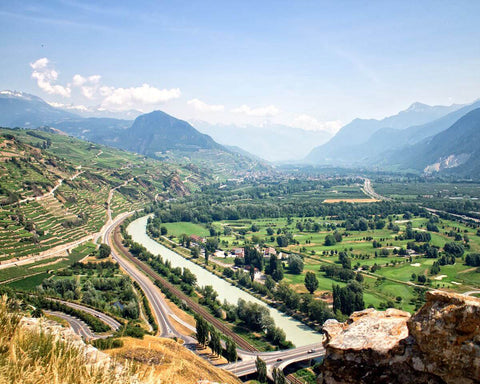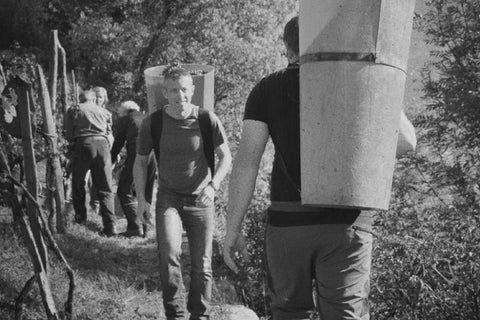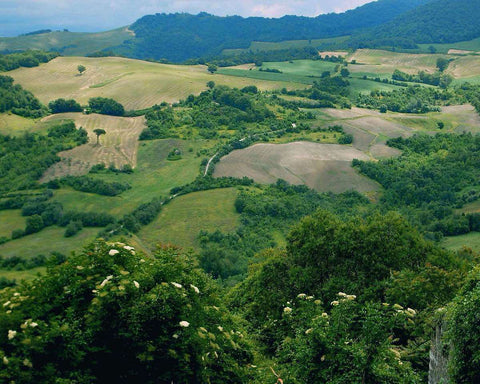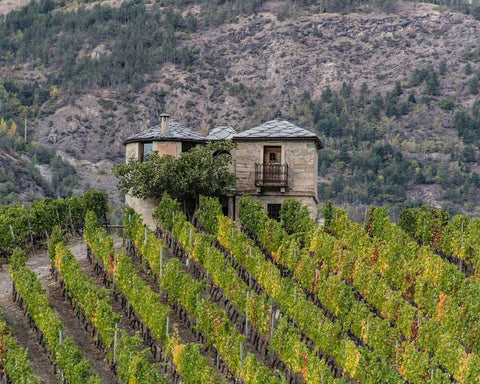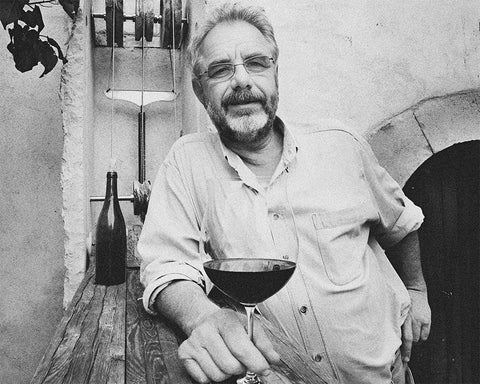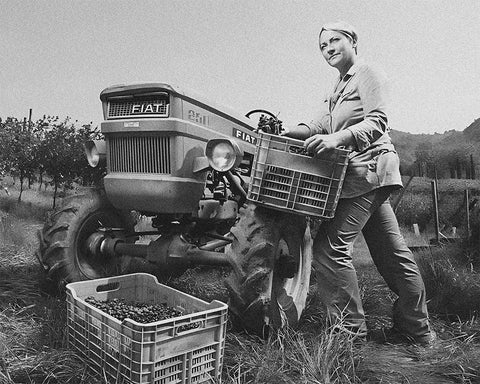Introduction and Overview
Burgundy (Bourgogne) is the spiritual home of Pinot Noir and Chardonnay, a narrow corridor of vineyards whose reputation rests on an intricate mosaic of lieux-dits and climats. Few wine regions combine history, nuance, and terroir transparency so completely.
Stretching roughly from Chablis in the north to the Mâconnais in the south, Burgundy’s slopes and mid-slope benches produce some of the world’s most precise, long-lived wines. The region’s power lies not in scale but in finely grained distinctions between sites often separated by a stone wall or a farm track.
“Le vin de Bourgogne est né de la terre et du temps.” Burgundy’s greatness emerges where geology, exposition, and human tradition intersect.
Burgundy matters because it codified the idea that specific parcels yield distinctive wines. Its hierarchical AOC system—regional, village, premier cru, grand cru—became a template for terroir-driven classification worldwide.
Geographic and Geological Foundation
Physical Geography
Burgundy comprises several discontinuous zones: Chablis (northwest), the Côte d’Or (Côte de Nuits and Côte de Beaune), Côte Chalonnaise, and Mâconnais. The best vineyards occupy gentle to steep limestone escarpments and mid-slope benches.
Elevation typically ranges from ~150 to 400 meters. Prime exposures are east to southeast, maximizing morning light and moderating afternoon heat. Vineyards are often narrow bands stepping up from the plain toward the forested plateau.
Key Geographic Facts:
• Elevation range: ~150–400 m
• Orientation: predominantly E/SE
• Core escarpment: Côte d’Or (“golden slope”)
• River influences: Yonne (Chablis), Saône (Côte d’Or)
Mid-slope positioning provides excellent drainage and radiation balance. Downslope colluvium and alluvium increase soil depth; upslope rendzinas are shallower and rockier.
Geological Terroir
Jurassic limestones and marls underpin Burgundy’s terroir. Variations—Comblanchien, Premeaux, and other limestones—alternate with marly layers, creating rapid soil changes over short distances. Chablis is famed for Kimmeridgian marl with fossilized oysters; some sectors sit on Portlandian limestone.
Soils range from thin, stony rendzinas to deeper clay-limestone mixes with gravel and scree. Drainage, active limestone content, and clay proportion shape water availability, vigor, and, ultimately, wine texture and structure.
Stone walls (murgers and clos) retain heat and delineate parcels. Scree fans and ancient faulting produce subtle topographic steps that correlate with cru quality.
Climate and Microclimate
Burgundy’s climate is semi-continental: cold winters, frost-prone springs, warm summers, and variable harvest weather. Vintage expression is pronounced. Mesoclimates shift with elevation, aspect, wind exposure, and proximity to forests or waterways.
In Chablis, cooler temperatures and higher winds favor taut, mineral whites. The Côte d’Or is slightly warmer and more sheltered; the Mâconnais enjoys the mildest conditions, yielding riper fruit and earlier harvests.
Historical Development
Ancient Origins
Vines likely arrived with the Romans, but Burgundy’s identity formed later as viticulture moved from plains to slopes. Early monastic records note delimited parcels and wine tithes.
By late antiquity and early medieval times, wine from the region was traded along river routes, laying foundations for its reputation.
Medieval and Renaissance Expansion
Cistercian and Benedictine orders (notably at Cîteaux and Cluny) meticulously observed terroir differences, building stone walls and documenting parcel performance. Ducal patronage and monastic discipline forged the culture of climats and clos.
By the Renaissance, villages like Gevrey, Vosne, Meursault, and Puligny were recognized for distinct styles. Parcel names appeared on deeds and contracts, prefiguring modern AOC labels.
Modern Era and Recognition
The AOC system (1930s onward) formalized Burgundy’s hierarchy. The Côte d’Or’s reputation soared post-WWII as domaines bottled their own wines. In 2015, the “Climats of Burgundy” gained UNESCO World Heritage recognition, validating centuries of site delineation.
Today, micro-parcels, meticulous farming, and precise cellar work define the region, alongside a dynamic negociant sector.
Viticulture: The Challenge of Fragmentation and Prestige
Definition and Characteristics
Instead of extreme slopes, Burgundy’s “heroism” lies in its fragmentation: thousands of owners, tiny holdings, and narrow rows that limit mechanization. Many parcels are under a hectare; some are a fraction of a hectare, demanding handwork and precision.
Frost, hail, and millerandage complicate yields. Quality hinges on canopy finesse, green harvest decisions, and impeccable pick timing.
Walls and Infrastructure
Dry-stone walls (murgers) and walled vineyards (clos) manage erosion, create mesoclimatic buffers, and mark ownership. Drainage channels, frost candles, wind machines, and selective hail nets are common investments. Narrow paths and low walls constrain tractors; many operations remain manual.
Socioeconomic Challenges
Napoleonic inheritance laws fractured holdings. Metayage/fermage agreements separate land ownership from farming, adding complexity. High land prices, tiny volumes, and global demand pressure affordability and succession. Counterfeiting risks push producers toward tighter traceability.
Grape Varieties and Viticulture
Pinot Noir
Pinot Noir is Burgundy’s red cornerstone: thin-skinned, early budding, exquisitely site-expressive. On limestone-rich mid-slopes it yields perfumed, structural wines with fine tannins and red-to-black fruit, spice, and sous-bois complexity.
Clonal and massale selections coexist; whole-cluster use varies by vintage, terroir, and house style.
Chardonnay
Chardonnay dominates whites from Chablis to the Côte de Beaune and Mâconnais, translating limestone into cut, texture, and length. Aligoté (notably Bouzeron) offers citrus-saline freshness. Gamay features in Bourgogne Passetoutgrains; César appears in Irancy; Sauvignon is singular to Saint-Bris.
Viticultural Practices
High densities (8–12k vines/ha), Guyot pruning, and low, narrow rows are typical. Many domaines farm lutte raisonnée, organic, or biodynamic. Precision leafing, shoot positioning, and yield restraint drive ripeness without excess alcohol.
Wine Classifications and Appellations
Bourgogne AOC
The regional tier spans red, white, and rosé from broad areas (and specific mentions like Bourgogne Côte d’Or). Styles aim for immediacy: bright fruit, moderate structure, and clear varietal expression.
Villages and Premier Cru AOCs
Village wines come from a single commune (e.g., Gevrey-Chambertin, Meursault). Premier Cru bottlings add named climats (e.g., Gevrey “Clos Saint-Jacques”, Meursault “Perrières”), offering elevated intensity, length, and aging potential.
The Five Major Subregions
Chablis (Chardonnay, Kimmeridgian soils): saline, chiseled whites.
Côte de Nuits (Pinot Noir heartland): structured, long-lived reds.
Côte de Beaune: both great whites (Puligny, Chassagne, Meursault) and reds (Pommard, Volnay).
Côte Chalonnaise: value-driven villages (Mercurey, Givry, Rully).
Mâconnais: generous, sunny Chardonnays (Pouilly-Fuissé, Saint-Véran).
Grand Cru AOCs
Grand Crus—e.g., Romanée-Conti, La Tâche, Richebourg, Chambertin, Musigny, Clos de Bèze, Bonnes-Mares, Montrachet, Chevalier-Montrachet, Corton-Charlemagne—sit atop the hierarchy. They unite perfect exposition, drainage, and geologic pedigree, yielding profound depth and longevity.
Crémant de Bourgogne AOC
Traditional-method sparkling from Chardonnay, Pinot Noir, and others. Styles range from brisk blanc de blancs to fuller rosé. Long lees aging and careful sourcing can deliver remarkable value.
Winemaking Techniques and Philosophy
Traditional Methods
Hand sorting, gentle destemming (or partial whole-cluster), native yeast ferments, pigeage/remontage as needed, and élevage in 228-L pièces are hallmarks. Large foudres appear in some cellars. Whites often see barrel fermentation with careful bâtonnage.
Modern Innovations
Optical sorting, precise temperature control, inert gas management, and parcel-by-parcel micro-vinification enhance precision. Concrete/ceramic vessels complement oak. Sulfur regimes are tighter; racking is gentler; bottling windows are optimized to preserve texture and perfume.
Natural and Biodynamic Movement
Organic and biodynamic adoption accelerates. Influential domaines and micro-négociants champion low-intervention approaches, native ferments, and minimal inputs—especially in Chablis and the Côte d’Or—balancing purity with stability.
Wine Styles and Characteristics
Regional Bourgogne Profile
Red: light-to-medium body, red cherry, cranberry, florals, fine tannins—built for bistro tables and early enjoyment.
White: citrus, green apple/pear, chalky cut; modest oak. Clean, food-friendly, and transparent.
Village and Premier Cru Complexity
Village wines amplify site markers; Premier Crus add structure, mid-palate sap, and length. Aromatics progress from fresh fruit to spice, florals, hazelnut, and savory earth with age. Textures grow silkier; finishes lengthen.
Grand Cru Power and Elegance
Grand Crus combine density with finesse: layered fruit, mineral drive, and seamless tannins in reds; in whites, a marriage of breadth and laser focus. Aging horizons often span decades.
Climate Change and Future Challenges
Environmental Impacts
Warmer seasons bring riper fruit and earlier harvests but raise alcohol, acid balance, and drought concerns. Spring frosts (notably in Chablis and low sites) and hail events threaten yields; heat spikes risk sunburn and phenolic imbalance.
Adaptation Strategies
Canopy shading, higher trunks, refined rootstocks, cover crops, and soil organic matter building improve resilience. Site selection edges upslope or to cooler expositions; picking windows tighten; whole-cluster use and lower new-oak ratios can balance ripeness.
Sustainability Initiatives
Rapid growth in organic/biodynamic certification, biodiversity corridors, reduced sprays, lightweight bottles, and renewable energy adoption. Collective frost-fighting protocols and water stewardship (where permitted) support long-term viability.
Major Producers and Market Dynamics
Leading Producers
Icons: Domaine de la Romanée-Conti, Leroy/D’Auvenay, Rousseau, Roumier, Mugnier, Vogue, Ponsot, Armand Heitz (modern Côte de Beaune), Coche-Dury, Leflaive, Raveneau, Dauvissat, Roulot, Comte Lafon.
Historic négociants/domaines: Jadot, Drouhin, Bouchard Père & Fils, Faiveley, Chanson—broad portfolios across tiers with rising single-vineyard precision.
Rising/benchmark micro-domaines: Dujac, Arnoux-Lachaux, Hudelot-Noëllat, Fourrier, Pierre-Yves Colin-Morey, Fichet, Barraud (Mâconnais).
Food Pairing and Gastronomy
Regional Cuisine Integration
Oeufs en meurette and boeuf bourguignon echo Pinot’s savory depth. Escargots de Bourgogne and gougères pair classically with Chardonnay. Époisses and other local cheeses resonate with mature whites or structured reds.
International Pairing Opportunities
Pinot Noir shines with duck, tuna, salmon, and mushroom-driven dishes; truffle accents elevate village and Premier Cru. Chardonnay spans oysters and shellfish (Chablis) to roast poultry and cream sauces (Côte de Beaune). Spicy cuisines pair best with fresher, lower-oak bottlings.
Wine Tourism and Cultural Heritage
Visitor Experiences
Walk or cycle the Route des Grands Crus, explore Beaune’s cellars and the Hospices, and tour walled clos like Clos de Vougeot. In Chablis, vineyard lanes and riverside paths reveal Kimmeridgian outcrops. Tastings focus on verticals by climat—an education in terroir nuance.


